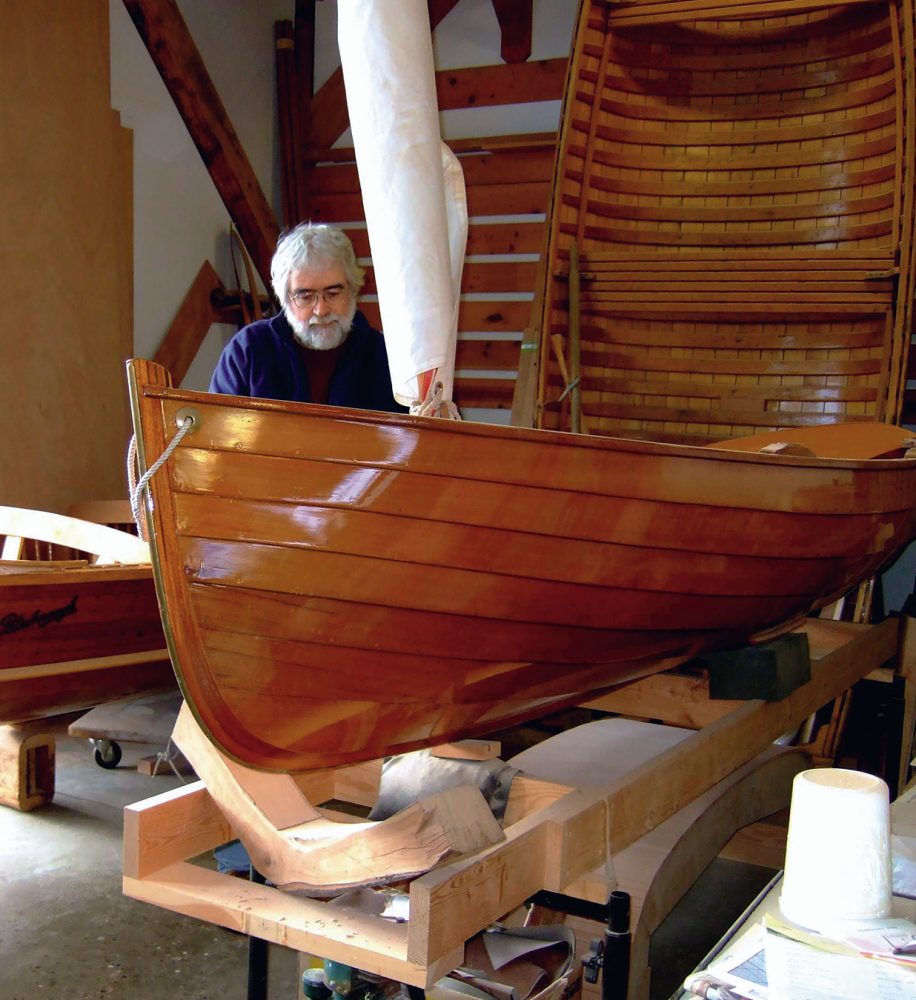At the eastern end of Vancouver’s Granville Island, the sound of a violin and the sweet scent of cedar drift through the door of the Alder Bay Boat Company. A long workbench, one of several in the space, stretches across the room, where David Bradford sits—a calm, smiling presence in a sea of tools and lumber. “It’s a wonderful space for a boat shop,” says Bradford, glancing around the room. “I certainly fill it up.”
The bright, high-ceilinged space displays the evidence of a lifetime of dedication to the artisanal way—he has been building boats as a business on and off since 1978. When Bradford started the Alder Bay Boat Company on Granville Island in 1990, the building was nothing more than an old shed. Today, wooden watercraft of various vintage and design are hung high or are temporarily marooned on low stands for easy access. Scratched on the white walls are pencil markings—the names and phone numbers of assorted clients and fellow aquatic enthusiasts. His office, which is roughly the size of a miniature punt, is decorated with pictures of pleasure craft and back issues of WoodenBoat magazine.
In a far corner, workbenches and wall space are covered with chisels, hand planers and handsaws that Bradford uses to define subtle lines and curves. “One of the things that I love about wooden boats is that you still use a lot of hand tools—probably about three-quarters of the work,” Bradford says. “It’s just faster, provided you have good tools and you know how to use them.”
Bradford builds custom rowboats, sailboats and motorboats using the traditional methods he’s learned over many years of practice. Depending on the vessel, he might use clinker construction, in which the wooden planks of the boat’s hull overlap; or carvel, in which the planks butt against each other with a caulking seam between; or cold-moulded, in which strips of thin wood veneer are layered to create a strong, sleek hull. When building new boats from scratch, Bradford focuses on one at a time, taking anywhere from two to four months for smaller craft, and up to 10 months for more complex designs.
Bradford points out a flat-bottomed skiff that he’s been working on, with overlapping planks of rich, edge-grain cedar that magically taper until they are flush at the boat’s stem. “There’s a little trick to that,” Bradford says, smiling. “It’s always challenging and interesting because everything’s always curving. There are no right angles.”
He also restores older vessels. Bradford points out another project, this one for the Langley Centennial Museum. At the moment, he’s refurbishing a 13-foot carvel boat, previously owned by an early farming family in the Fraser Valley.
Outside the workshop, he contributes his experience and enthusiasm for craftsmanship and boat building to several community activities. He’s the president of the Artists and Artisans of Granville Island Association, and has been teaching boat making to kids and adults at the annual Wooden Boat Festival for many years. His shop’s location allows him to connect with a wide cross-section of people, including artisans and passersby, who stop in to see what he’s working on or to ask for help trimming a board.
Bradford appreciates the personal connections he’s made through his work, and takes pride in the many adventures he’s helped launch by transforming rivets and lumber into sailboats and skiffs. “You start with something that didn’t exist before, and with materials and tools you create it,” he says. “You get this feeling of putting yourself into it, of putting all your effort or your skill over a period of time, and then you stand back and say, ‘I built that.’ ”
Photo: Courtesy Alder Bay Boat Company.









